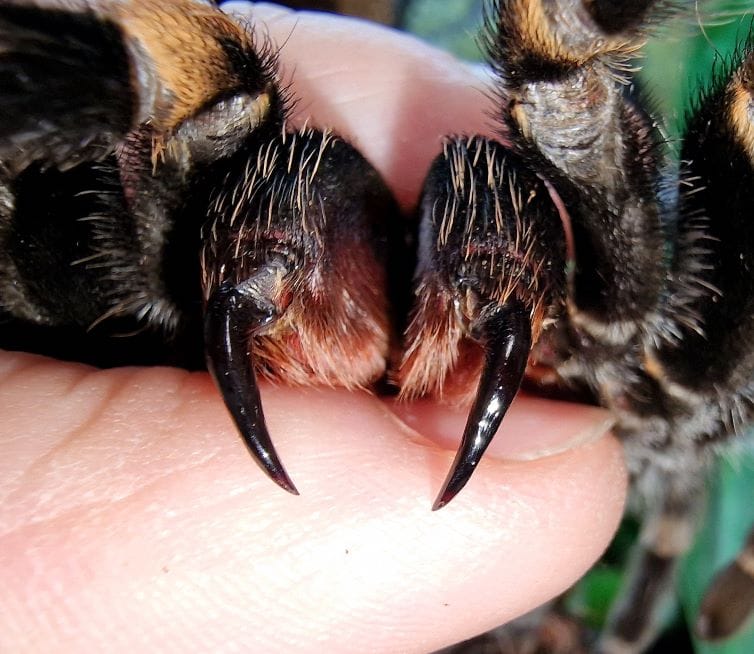This absolutely beautiful spider is Ruby, an adult female MEXICAN RED KNEE TARANTULA. This is the species of tarantula with which most people are familiar from pictures or on television/films, as it is one of the most popular species of all due to its colouration. I acquired Ruby in 2014 when she was a small juvenile and she has grown a lot since then and become very attractive indeed. She is very calm and friendly too, as anyone who has met her will know!

It is very unfortunate that tarantulas have such a bad reputation for being nasty and dangerous creatures as it just is not true. Despite being venomous they are really not dangerous to people at all and rarely if ever bite, despite films often showing them doing this. If a person is bitten by a tarantula the effect is usually no worse than a bee sting as their venom is generally quite weak, so they are not at all the deadly creatures which many people believe them to be.
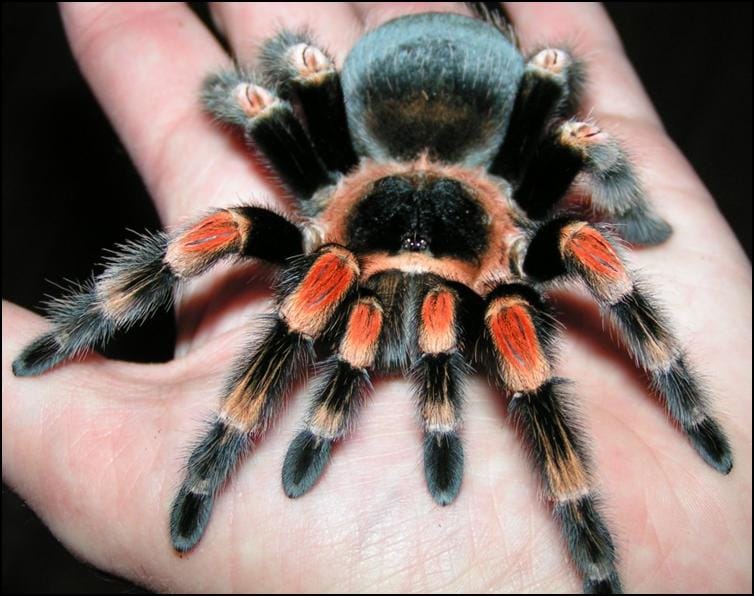
Tarantulas are actually generally shy and secretive animals and many of the terrestrial (or ground-based) species like this one spend their days hiding under logs or even underground in burrows which they create for themselves, but thankfully Ruby here likes to be on display in her enclosure at all times! In the wild Mexican red knee tarantulas spend a lot of time in their deep burrows where they hide from predators such as the coati.
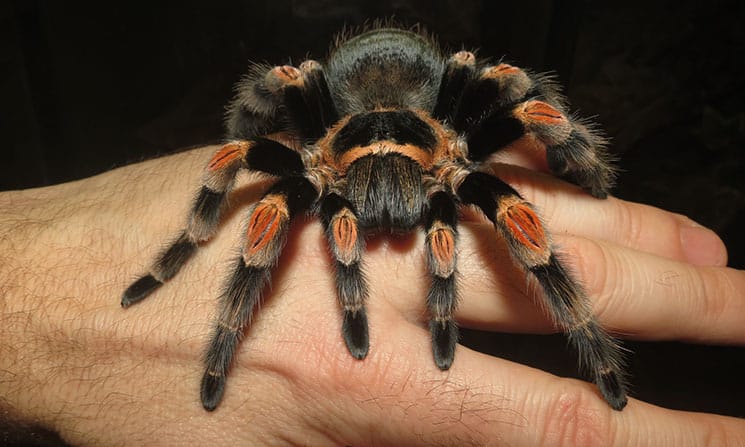
In 2014 when I acquired Ruby she was very tiny and looked very different from how she looks now! The rich red / orange colouration develops as they grow and change, but as a small spiderling they don’t really show any colouration other than different shades of brown as you can see below:

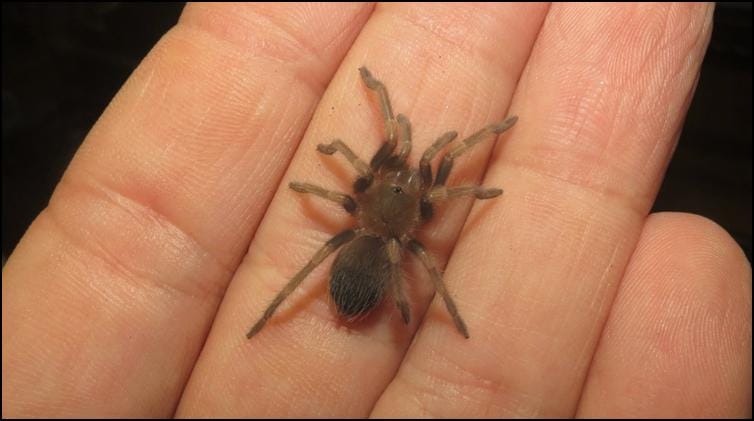
Tarantulas have to moult (remove) their outer body or exoskeleton as they grow and develop. Here is Ruby soon after moulting for the first time after I acquired her in 2014, on the right of the picture next to her moulted exoskeleton (left):
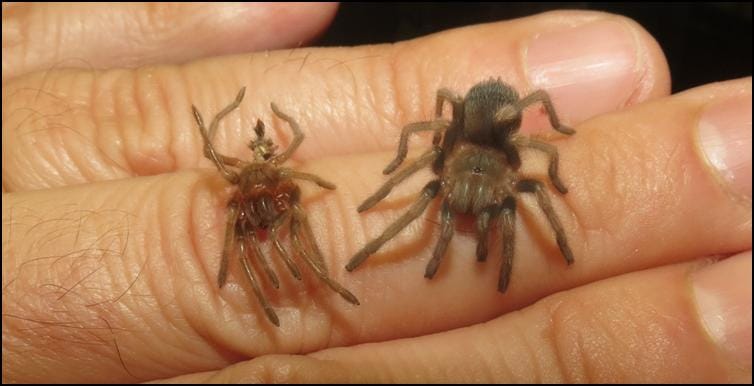
Here she is a year and a bit later in December 2015 following a few more moults, looking very different indeed and a whole lot more like she does now!
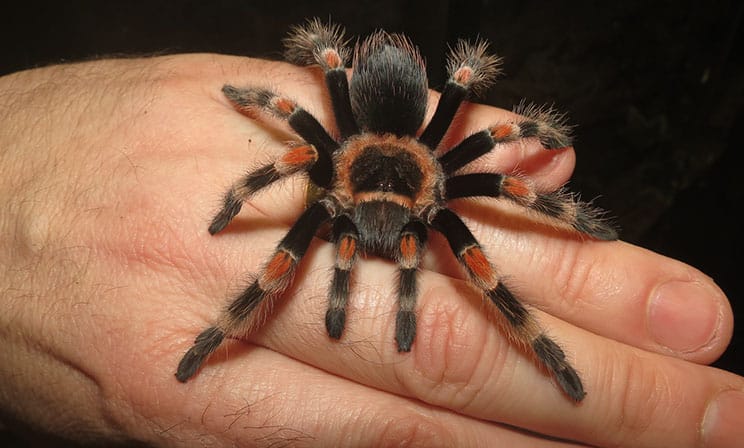

The moulting process is one of the most fascinating things about keeping tarantulas as they completely renew the whole of their exoskeleton whilst somehow leaving their old exoskeleton in one piece! The picture below shows the type of scene which greets me each time Ruby moults:
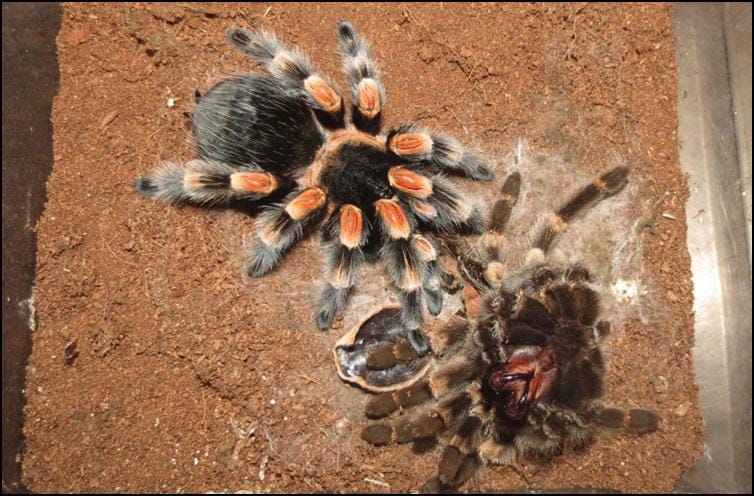
It is always a remarkable and unusual sight as it looks like there are two tarantulas, but the one on the bottom right of the picture above is nothing more than the empty outer body (exoskeleton) out of which the real Ruby (above left) has squeezed herself! I always very carefully shape each empty crumpled exoskeleton (also known as an exuvia) back into its original shape as much as possible so that I can use them in my talks / presentations. They usually come out pretty well and here are two different sized ones together as a comparison!
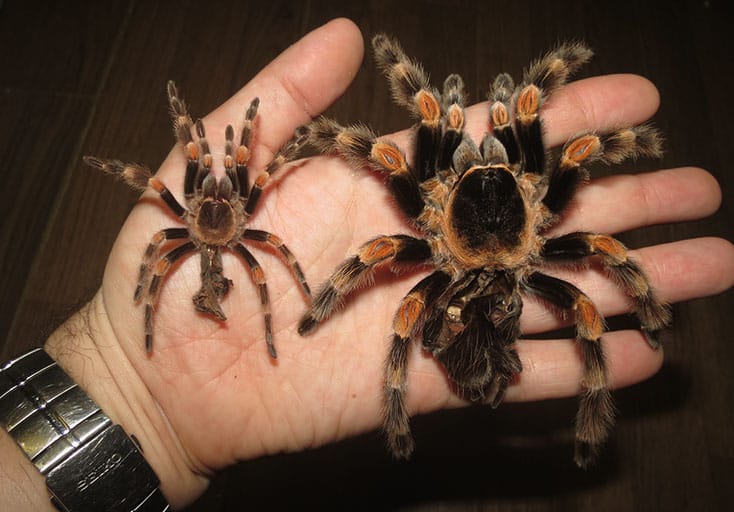
The first picture below shows one of Ruby’s exuviae with the carapace (head) in place, whereas in the second picture below it has been flipped open to reveal the inside:
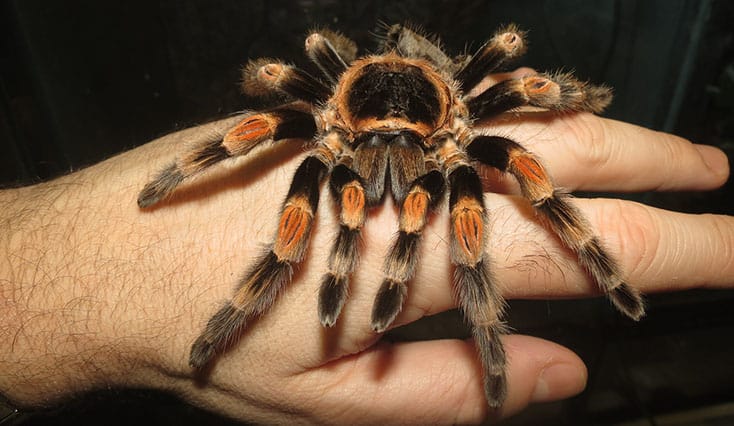
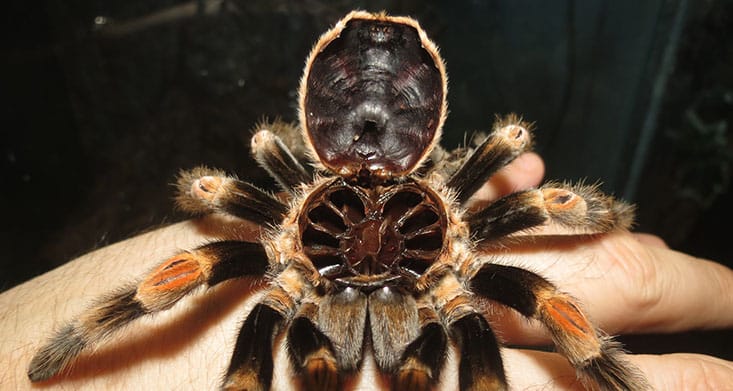
It is through the openings in the central part of the body (underneath the carapace) that the tarantula has to pull all of its new legs and fangs, a truly remarkable achievement. You can see these openings more clearly in the two pictures below, with carapace intact first and then removed in the second picture!
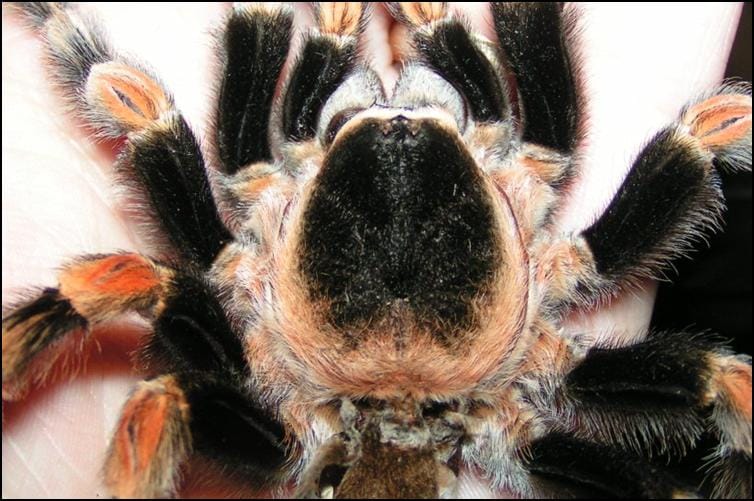
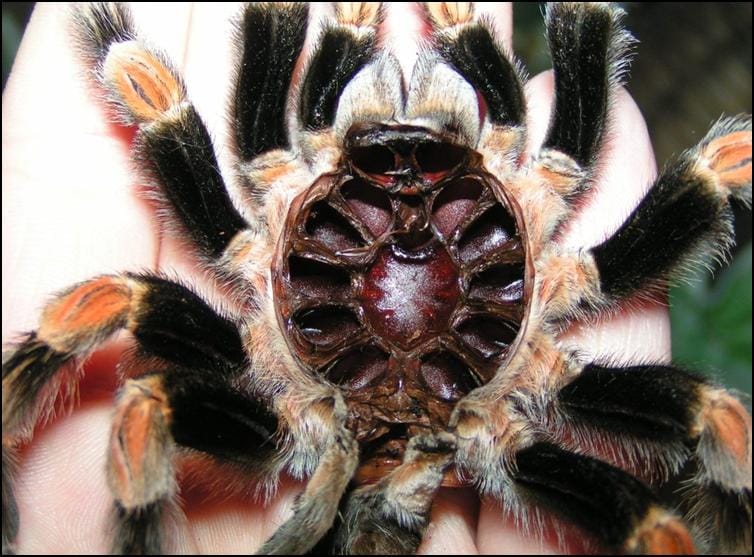
Each opening leads into a hollow tunnel and the new legs and fangs are pulled out of these during the long process of moulting, which can take several hours to complete. I have always said that this is one of the most remarkable sights in the natural world and I stand by that claim again today, it is a sight I never tire of seeing! The picture below shows Ruby’s old fangs from her most recent exuvia and these fangs are the two reasons that I never let children hold tarantulas – no matter how calm and friendly all of mine are!
